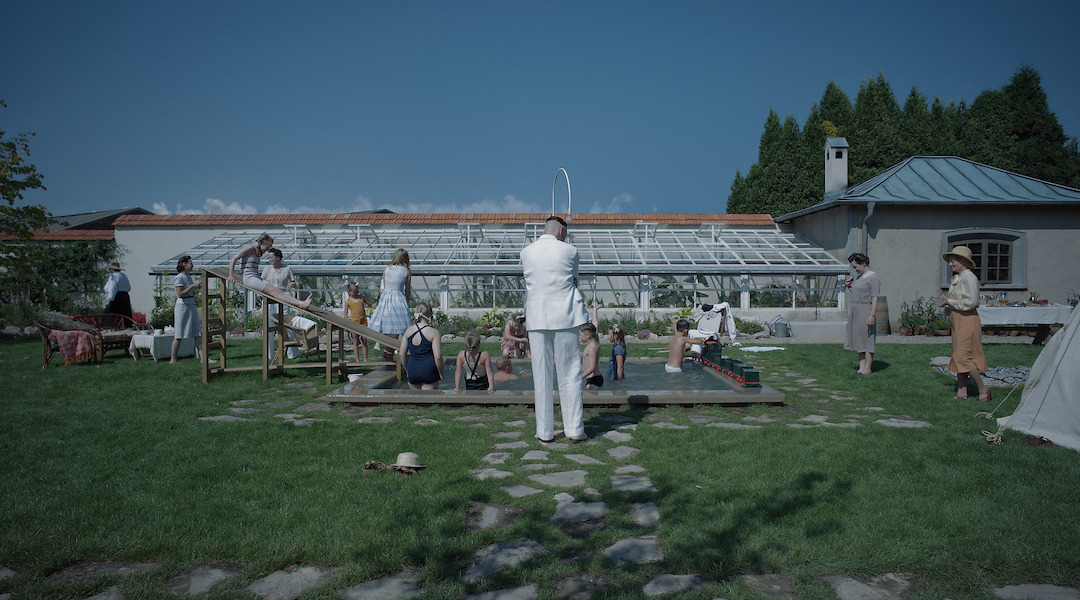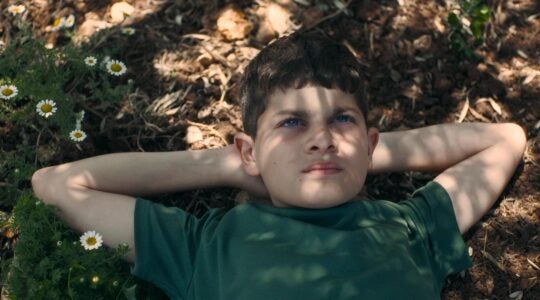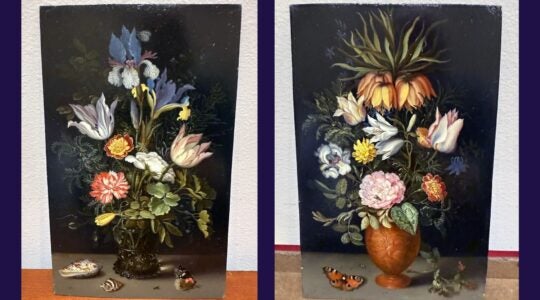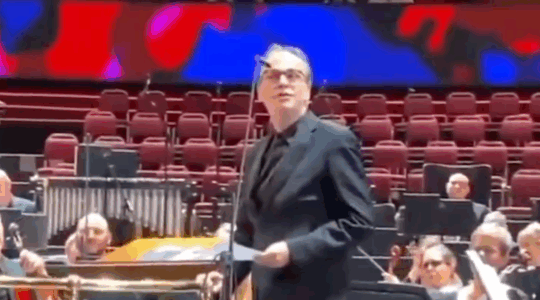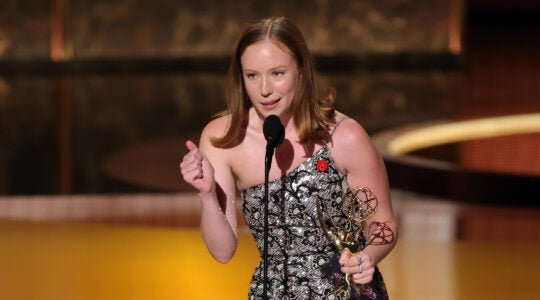(JTA) – “The Zone of Interest” is not like other Holocaust movies.
Directed by British Jewish filmmaker Jonathan Glazer, the film initially appears to follow an unexceptional German family in the 1940s and their idyllic lifestyle in a cute cottage near a river. A father (Christian Friedel), a mother (Sandra Hüller) and their five children host parties, go swimming, tend to their garden and read bedtime stories at night.
Only gradually does the movie reveal that this family’s seemingly idyllic homeis located directly adjacent to the Auschwitz death camp — and that the patriarch is none other than Rudolf Höss, that camp’s real-life commandant, who directly oversaw the systematic murder of more than a million Jews, and perhaps many more. Audiences never see these murders, but they hear the horrific evidence of the slaughter: screams, gunshots and the machinery of the gas chambers.
“The Zone of Interest,” which won the Grand Prix at this year’s Cannes Film Festival, never shows the inside of the camp’s operations. Yet it is still rooted firmly in historical realities about the Holocaust and in the minute details of how the Hösses lived comfortably alongside it, ignoring the mass suffering their father was orchestrating.
Glazer and his team did years of research before filming in an effort to capture the tonal disconnect of the moment, in perhaps the purest cinematic distillation yet of German Jewish philosopher Hannah Arendt’s famous proclamation about “the banality of evil.”
“I wanted to dismantle the idea of them as anomalies, as almost supernatural,” Glazer, who also adapted the script, told The New York Times about his depiction of the Hösses. “I wanted to show that these were crimes committed by Mr. and Mrs. Smith at No. 26.”
Here’s what you need to know about the new film, which is gathering awards buzz and has been shortlisted for the best international feature Oscar as it enters a limited theatrical release this month.
What is “The Zone of Interest” based on?
Glazer, whose previous films include “Under the Skin,” “Sexy Beast” and “Birth,” adapted his script for “The Zone of Interest” from the late British author Martin Amis’ 2014 novel of the same title. But the film differs considerably from the novel, and has a greater basis in historical fact.
While Amis’ novel followed multiple plotlines, including a love triangle, set in and around Auschwitz, Glazer’s script stripped away everything except the Höss family at its center. He also made his film about the real Höss family, whereas Amis (who died as the film was premiering at Cannes) had rendered fictional versions of them.
Glazer also went further, hiring researchers at the Auschwitz-Birkenau museum in Poland to look into details of the Höss family’s lifestyle. (The film was shot near the museum, in a formerly dilapidated house the production crew transformed into a replica of the actual Höss home.) He was also, he told The Times, inspired by sources like Timothy Snyder’s “Black Earth: The Holocaust As History And Warning,” and the writings of Gillian Rose.
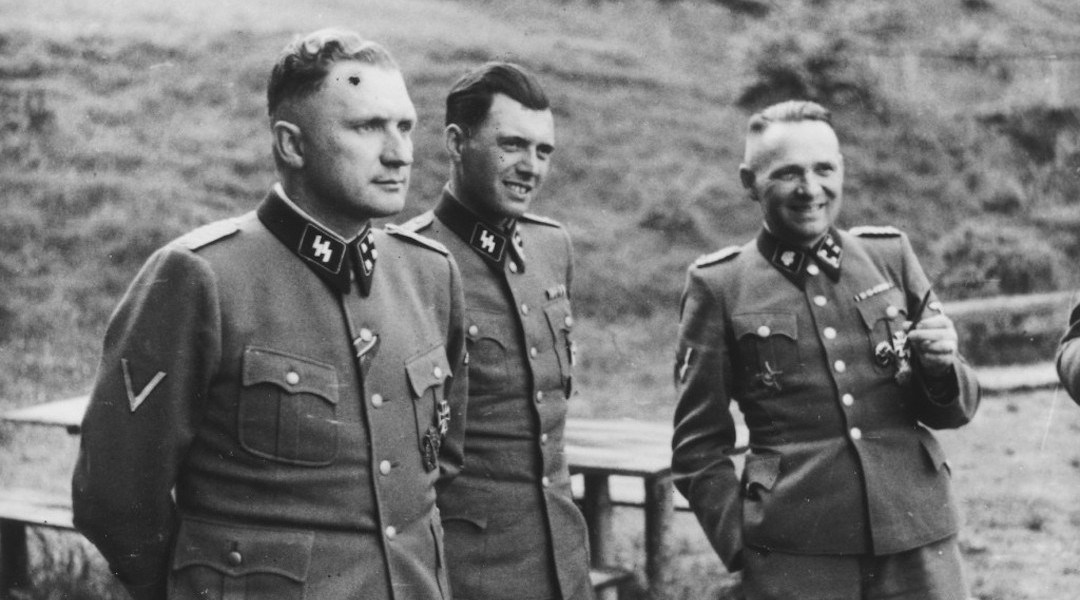
Rudolf Höss, far right, is shown in a photograph with, from left, fellow SS officers Richard Baer and Dr. Josef Mengele, at Solahütte, the SS retreat outside of Auschwitz. (Karl Höcker album/U.S. Holocaust Memorial Museum)
Who was Rudolf Höss?
Rudolf Höss was the Nazi commandant who oversaw the mass killing operations at Auschwitz-Birkenau, having been posted there from 1940 until nearly the end of the war. Before Auschwitz, Höss — born Catholic and a World War I veteran who became a committed Nazi from the beginning of Hitler’s rise to power — was posted at the Dachau and Sachsenhausen camps, where he learned the tricks of the trade of mass death.
Within the Nazi upper ranks, Höss was considered, according to an SS report, a “true pioneer” for his mass-killing innovations at the camp, which became the deadliest site of the war under his watch. After the Final Solution began being implemented in 1941, Höss installed gas chambers and ovens at Auschwitz capable of killing thousands of people every hour and disposing of their bodies; from then on, the camp was a brutally efficient system of death. He was also the one who introduced the poisonous gas Zyklon B to the camps, impressing Adolf Eichmann.
As portrayed in the film, Höss was briefly transferred to a more administrative role within the Nazi Party in 1943 — a move that the family gardener has testified angered Rudolf’s wife Hedwig (Sandra Hüller), because she believed the family had everything they needed at Auschwitz. (Glazer has said that his need to understand this argument between the two of them was the driving force behind the film.) However, he was reassigned to the camp the following year to oversee the mass extermination of Hungarian Jewry in an operation named after him.
He went into hiding after the war, but was tracked down by Hanns Alexander, a German Jewish Nazi hunter, and stood trial in Poland in 1947, where he was sentenced to death. The Jewish Telegraphic Agency covered his trial at the time.
Höss admitted to his role in the genocide in a written statement in which he coldly describes the “improvements” his Auschwitz team made over similar extermination efforts at Treblinka — using the same dispassionate, removed cadence spoken by the movie’s version of Höss.
Höss was hanged in Auschwitz at the age of 45, on gallows he himself had ordered constructed at the camp.
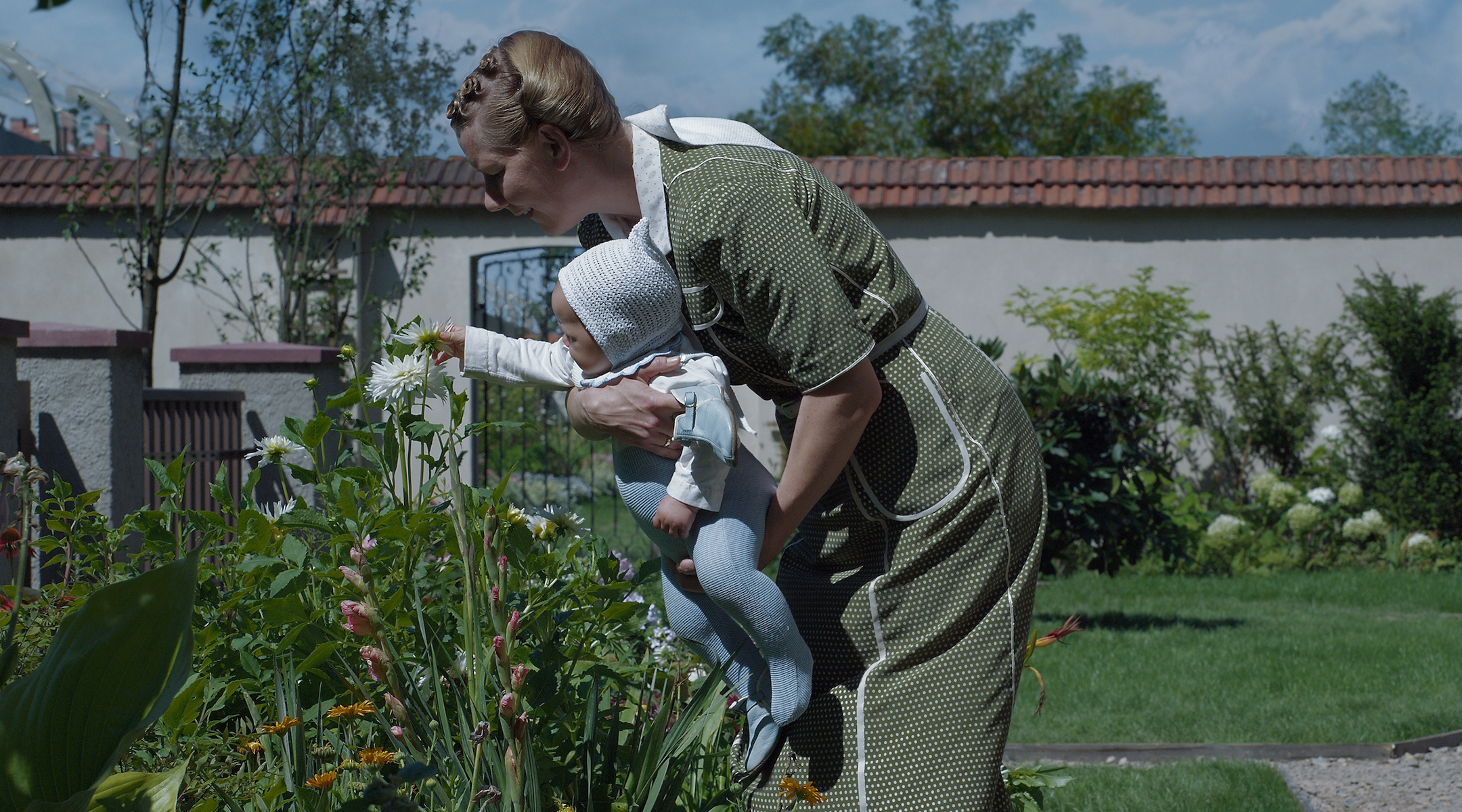
The Höss family, depicted above in a scene from “The Zone of Interest,” tended a garden in their home on the edge of the Auschwitz-Birkenau death camp. (Courtesy of A24)
What do we know about the Höss family?
The bulk of “The Zone of Interest” focuses not on the mass extermination, but rather on the particulars of Höss’ family life and the ways in which this Nazi clan mentally separated the two. As in the movie, the real Höss family lived in an impeccably maintained two-story house that bordered Auschwitz: They could see the prisoner blocks and crematoria from their upstairs window.
Rudolf and Hedwig saw themselves as homesteaders, fulfilling the Nazi ideal of reclaiming rural territory for the master race. While Rudolf went to work at the camps every morning, Hedwig busied herself with her social life and proudly accepted the moniker of “Queen of Auschwitz.” Historian Thomas Harding wrote about how they stocked their closets with clothes and jewelry seized from the Jews who were exterminated, and with the help of a large waitstaff, including some Auschwitz prisoners, they kept a garden, often entertained guests and swam and canoed on the nearby Sola River with their kids. (One scene in the movie depicts Rudolf hurrying his kids away from the river once he realizes it is full of human ash from the camps.)
After Rudolf was caught and hanged after the war, his family was free to go, but they were shunned by German society. One of his daughters, Brigitte, would later move to the U.S., where she worked for decades at a Washington, D.C. fashion store owned by Jews who had fled the Nazis after Kristallnacht, and her mother came to visit her frequently. In 2013, at the age of 80, Brigitte told Harding she hardly thought about her Auschwitz childhood, but that she recalled her father as “the nicest man in the world,” said she believed his confession had been coerced by the British, and doubted the reported death tolls at the camp.
What is the Yiddish song featured in the movie?
Late in the film, an unnamed character — likely a partisan — sits down at a piano to play a song with an unusual melody. The song is “Sunbeams,” a little-heard resistance song composed inside Auschwitz by the Polish Jewish prisoner Joseph Wulf. Though it is not sung out loud, the lyrics appear on the screen as the plaintive melody is played, and Wulf’s own voice (recorded in the late 1960s) introduces it.
Wulf wrote:
Sunbeams, radiant and warm
Human bodies, young and old
And who are imprisoned here,
Our hearts are yet not cold
According to the Forward, Glazer’s research team reached out to musicologists at the U.S. Holocaust Memorial Museum seeking obscure Yiddish music that had been written in Auschwitz.
Wulf himself survived the camp and a death march in 1945, settled in Germany in the 1950s and became a historian who tried to force German society to confront and account for the crimes of the Nazi regime. He also became a West Berlin correspondent for JTA.
Wulf spent his life trying to turn the site of the Wannsee Conference, where the Nazis formalized the Final Solution, into a Holocaust memorial that he would head up. But it didn’t happen in his lifetime. In 1974 he leaped to his death from his Berlin apartment.
In a note to his son, Wulf lamented: “I have published 18 books about the Third Reich and they have had no effect … The mass murderers walk around free, live in their little houses, and grow flowers.”
JTA has documented Jewish history in real-time for over a century. Keep our journalism strong by joining us in supporting independent, award-winning reporting.
